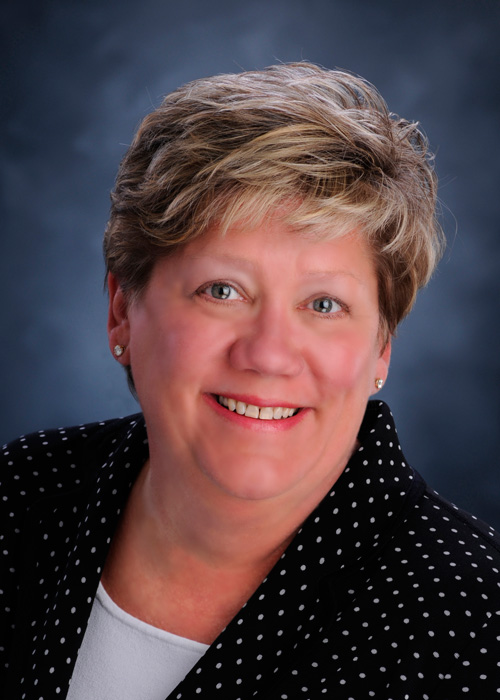July 2009 Vol. 236 No. 7
Q&A
New President Outlines Her Goals At The Helm Of Pipe Coating Association

Merry L. Brumbaugh, who has spent almost all of her 29-year career in the coated tubulars segment of the L.B. Foster Company, Pittsburgh, PA, has the distinction of being chosen the first woman to be president in the 44-year history of the National Association of Pipe Coating Applicators (NAPCA).
The association is an international group devoted to furthering the success of operators of permanent facilities that apply protective and anti-corrosion coatings to the outside and inside of line pipe.
Pipeline & Gas Journal visited with Brumbaugh and to discuss her career and her goals for NAPCA.
P&GJ: Congratulations on your election. What are your thoughts about being named the first woman to be named president of NAPCA?
Brumbaugh: This election was not about gender. Each year our association elects an experienced pipe-coating professional as NAPCA president. My experience includes serving six years as a member of the NAPCA board and being vice president of L.B. Foster Tubular Products. Having said all that, it is important to acknowledge that women are taking up the challenge to compete in all fields. When I began in the pipe-coating industry few salespeople and even fewer facility managers were women. That situation remains a concern today.
P&GJ: Where did you grow up and when did you become interested in your discipline as a career?
Brumbaugh: I was raised in Chicago and the city remains home to much of my family. I now proudly hail from Pittsburgh, but a bit of my heart will always be lost to my hometown. My first real employment was as a sales secretary for a Chicago aluminum manufacturing company. It was in this job that I became interested in industrial sales. It was unusual at that time to find a woman in such a position, but my manager must have seen some potential in me. He suggested that the fast track to a successful industrial sales position required a college degree and he encouraged me to return to school.
P&GJ: What was the career path that led to your current position with L.B. Foster?
Brumbaugh: In 1980, I graduated from Loyola University and applied for a job with L.B. Foster’s Chicago office. My first interview went badly, but I came back and tried again. Today, I consider myself very fortunate to have spent 29 years at L.B. Foster and lucky to have worked directly for President/CEO Stan Hasselbusch during most of that time.
P&GJ: What brought you into the energy industry?
Brumbaugh: In 1981, L.B. Foster purchased Utilities Coating Services. This new acquisition created an opportunity for the Chicago district office to begin marketing pipe and pipe coatings to natural gas transmission and distribution companies. At the time I had no idea I had just begun a life journey down my career path.
P&GJ: How has L. B. Foster’s business strategy evolved in recent years?
Brumbaigh: Our company has always been focused on quality and safety, but today we have implemented many exciting new programs that encourage continuous improvement. These initiatives have raised our quality to new highs and lowered our accident rate to near zero. The great team at L.B. Foster Coated Products has made our Birmingham coating plant the benchmark for these corporate-wide efforts.
P&GJ: The national and international petroleum pipeline industry has experienced some extreme business cycles. How has the pipe-coating sector adapted to the wide swings?
Brumbaugh: Though we are not market creators, plant-applied coaters do have an important role to play between the pipe manufacturer and the energy company. As an industry, coaters have worked hard to adapt to market demands by improving processes and driving costs down.
P&GJ: How have you seen the pipeline business change in recent years?
Brumbaugh: All NAPCA regular members have moved to employ innovative methods that meet or exceed customer specifications. They have implemented programs to document manufacturing problems and improve coating quality. Coaters now partner more than ever with pipe mills and protective coatings manufacturers to provide the highest quality product available.
P&GJ: What key challenges lie ahead for the pipeline-coating industry?
Brumbaugh: Our industry needs to attract and retain young talent who will be the pipe-coating professionals and NAPCA members in the years ahead.
P&GJ: Thinking about the time you will serve as association president, what would you like to accomplish?
Brumbaugh: In 2008 NAPCA commissioned a survey to determine how the association could add more value for its membership. The results of this study focused on the need for NAPCA to offer additional technical assistance. I hope to provide forums at workshops and conventions to discuss important technical issues and to develop an online archive for this information.
P&GJ: What are NAPCA members concerns as they look at the near-term economy?
Brumbaugh: Pipelines are highly leveraged and the credit shortage is causing construction delays. In the near term, these delays will continue to influence the 2009 business cycle. When this downturn ends, pipelines will still need to be built and they will eventually be constructed.
P&GJ: Is there a major pipe-coating technology change coming that pipe coaters will need to manage?
Brumbaugh: In the near term, I believe the use of dual-layer coatings will become more prevalent in the U.S. Work is also progressing on the development of lower temperature-cured coatings and deeper well drilling and completions will require more extreme coating performance.
P&GJ: What are some activities you enjoy sharing with your family away from work?
Brumbaugh: I have a very dear husband with whom I enjoy hiking in Pittsburgh’s beautiful riverside parks and fishing in our pond. I also maintain a serious culinary relationship with my barbecue.
P&GJ: What advice would you have for a young person who wanted to follow in your footsteps?
Brumbaugh: Listen to your customers, both internal and external. Always question and be ready to improve your processes. Lastly, find a mentor within your field.





Comments